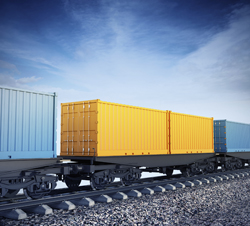More efficient rail freight
European rail carries about 10 % of the freight market. Road transport comprises the remainder, but this high load leads to road congestion and numerous environmental problems. While most stakeholders agree that rail must take up more of the load, there is no simple solution. European rail freight is burdened with an inefficient system where freight containers cannot be unloaded at intermediate stops along a route. Containers are loaded and unloaded in marshalling yards off the main tracks using a vertical crane. Overhead electric wires prevent the cranes' use outside those yards, and a horizontally loading crane system that fits under the wires is therefore required. Fortunately, such a prototype system was developed by an earlier EU-funded project, 'Vision for innovative transport' (VIT). Bringing that system from a prototype to market readiness was the goal of the EU-funded 'Metrocargo intermodal transport' (MIT)(opens in new window) project. The five-member consortium worked towards realising this goal for 2 years up to July 2013. The project provided exhaustive details about its improvements to 21 train systems, or rail freight scenarios. These yielded final designs for machinery and operating software. The improved system permits a passenger-style freight movement whereby a train stops at every station, allowing containers to be removed or added without delay. A short road leg would complete the containers' journey. Detailed marketing studies were carried out for Germany, Spain, France and the United Kingdom. The system is now market-ready, and known to European decision makers via the project's substantial dissemination efforts at trade shows. System tests showed the capacity to efficiently load trains in ports. The Port Authority of Savona (north-west Italy) decided to install the MIT system at the rail terminal of a multimodal platform, currently under construction. The rail terminal will move 40 % of the container port's capacity. The MIT project resulted in commercial uptake of an efficient rail freight system. It solved numerous problems for Europe, while also offering opportunities for European small and medium-sized enterprises.



